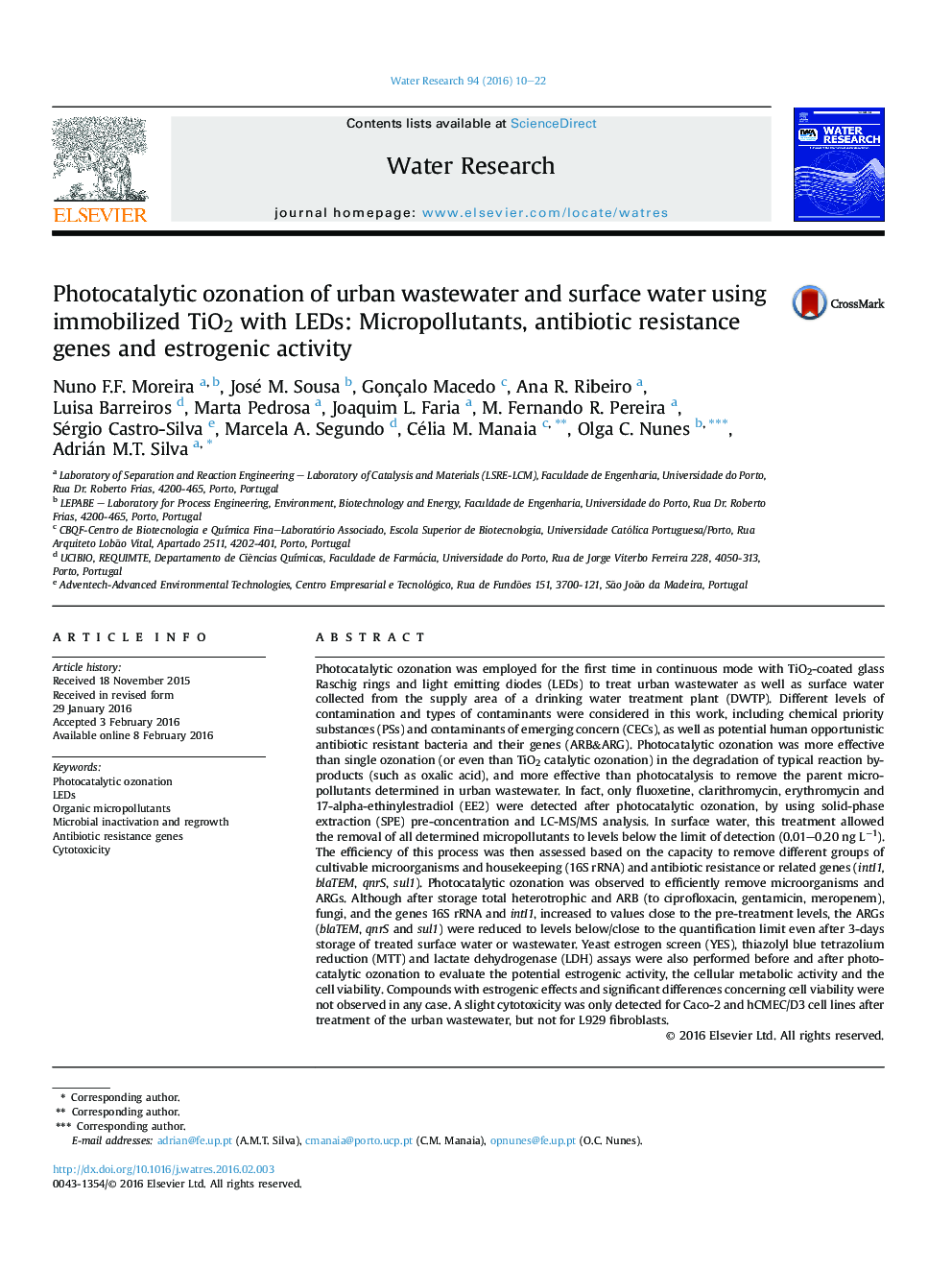| کد مقاله | کد نشریه | سال انتشار | مقاله انگلیسی | نسخه تمام متن |
|---|---|---|---|---|
| 6365195 | 1623074 | 2016 | 13 صفحه PDF | دانلود رایگان |

- Treatment of urban wastewater and of surface water for drinking water production.
- Removal efficiency assessment of antibiotic resistant bacteria (ARB) & genes (ARGs).
- Photocatalytic ozonation in continuous mode with TiO2-coated glass rings and LEDs.
- Efficient removal of organic micropollutants, cultivable microorganisms and ARGs.
- ARGs below/close to quantification limit even after 3-days storage of treated water.
Photocatalytic ozonation was employed for the first time in continuous mode with TiO2-coated glass Raschig rings and light emitting diodes (LEDs) to treat urban wastewater as well as surface water collected from the supply area of a drinking water treatment plant (DWTP). Different levels of contamination and types of contaminants were considered in this work, including chemical priority substances (PSs) and contaminants of emerging concern (CECs), as well as potential human opportunistic antibiotic resistant bacteria and their genes (ARB&ARG). Photocatalytic ozonation was more effective than single ozonation (or even than TiO2 catalytic ozonation) in the degradation of typical reaction by-products (such as oxalic acid), and more effective than photocatalysis to remove the parent micropollutants determined in urban wastewater. In fact, only fluoxetine, clarithromycin, erythromycin and 17-alpha-ethinylestradiol (EE2) were detected after photocatalytic ozonation, by using solid-phase extraction (SPE) pre-concentration and LC-MS/MS analysis. In surface water, this treatment allowed the removal of all determined micropollutants to levels below the limit of detection (0.01-0.20 ng Lâ1). The efficiency of this process was then assessed based on the capacity to remove different groups of cultivable microorganisms and housekeeping (16S rRNA) and antibiotic resistance or related genes (intI1, blaTEM, qnrS, sul1). Photocatalytic ozonation was observed to efficiently remove microorganisms and ARGs. Although after storage total heterotrophic and ARB (to ciprofloxacin, gentamicin, meropenem), fungi, and the genes 16S rRNA and intI1, increased to values close to the pre-treatment levels, the ARGs (blaTEM, qnrS and sul1) were reduced to levels below/close to the quantification limit even after 3-days storage of treated surface water or wastewater. Yeast estrogen screen (YES), thiazolyl blue tetrazolium reduction (MTT) and lactate dehydrogenase (LDH) assays were also performed before and after photocatalytic ozonation to evaluate the potential estrogenic activity, the cellular metabolic activity and the cell viability. Compounds with estrogenic effects and significant differences concerning cell viability were not observed in any case. A slight cytotoxicity was only detected for Caco-2 and hCMEC/D3 cell lines after treatment of the urban wastewater, but not for L929 fibroblasts.
436
Journal: Water Research - Volume 94, 1 May 2016, Pages 10-22